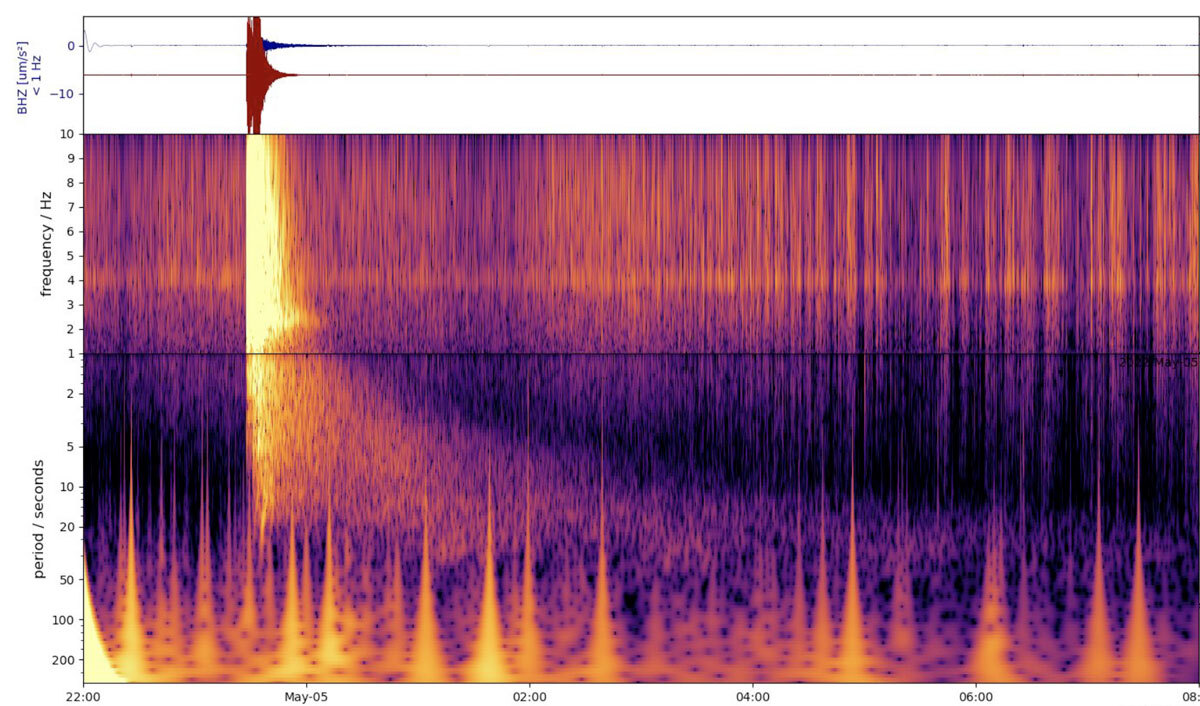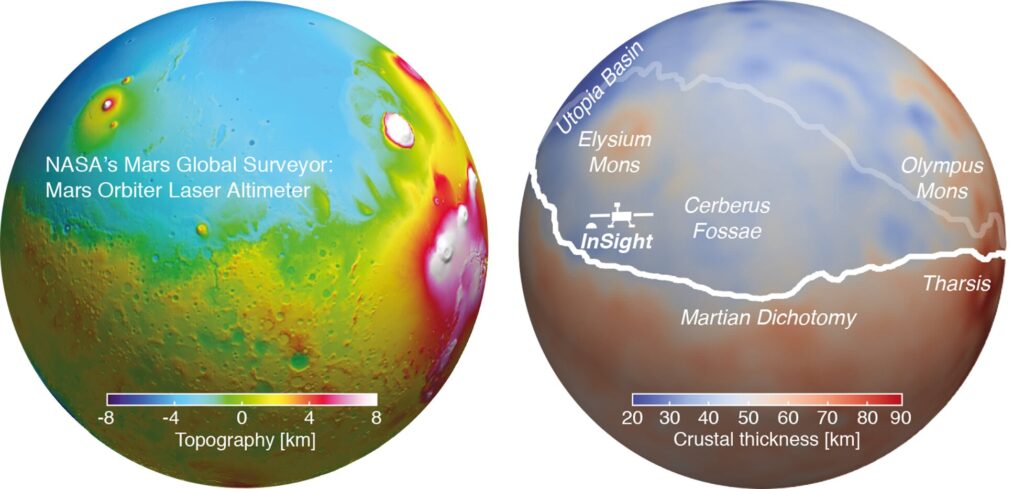A strong marsquake recorded by the InSight mission last year allowed scientists to measure the thickness of the Red Planet‘s crust. It turns out that it is much thicker than the earth’s crust.

Since its landing at the end of 2018, one of the key tasks of the InSight spacecraft has been to search for marsquakes. Analyzing the nature of the propagation of seismic waves, scientists tried to find out the features of the internal structure of the planet.
In May 2022, just a few months before the end of its mission, InSight recorded a record-breaking Mars earthquake. Its magnitude was 4.6 points. The most important thing was that various types of seismic waves were recorded during the marsquake. They circled the planet three times, which made it possible to determine its global structure.
The analysis showed that the average thickness of the Martian crust was 42-56 km. The lowest value (10 km) was registered on the territory of the Isidis Planitia, the largest (90 km) on the territory of the volcanic region of the province of Tharsis. For comparison, the average thickness of the Earth’s crust is 21 – 27 km, the crust of the Moon is 34 – 43 km.
InSight data confirmed that the dichotomy of the hemispheres of Mars (the northern hemisphere has a smoother relief and is 3-6 km lower than the southern one) is not limited only to their topography, but is also reflected in the internal structure. The crust in the northern regions of the planet is thinner than in the south. At the same time, it has the same density. This may serve as confirmation of the hypothesis that the dichotomy of the Martian hemispheres is associated with the consequences of the impact of a large object; it occurred at the beginning of the existence of the Solar System.

The study also helped shed light on the Red Planet’s internal heat sources. It is generated during the decay of radioactive elements such as thorium, uranium and potassium. The analysis carried out by scientists showed that from 50% to 70% of these elements should be in the Martian crust.
According to https://phys.org
Follow us on Twitter to get the most interesting space news in time
https://twitter.com/ust_magazine
